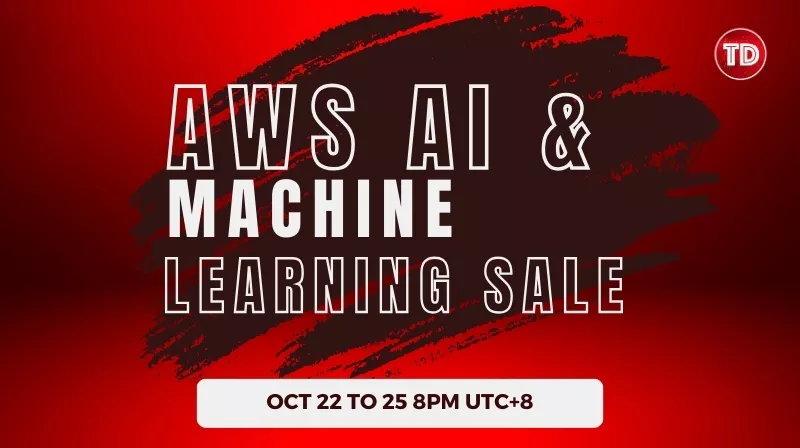Today’s tech industry is dominated by Big Data and Cloud Computing. It is crucial for companies and organizations to efficiently manage large volumes of data. To address this important need, AWS offers robust solutions for handling these chunks of large data, particularly through batch data ingestion. This process involves collecting and importing bulk or big data into storage or other processing systems at regular intervals or specific events. Batch data ingestion is crucial for scenarios where immediate or real-time processing is not necessary, allowing for efficient resource utilization. Batch data ingestion in AWS is not only efficient and cost-effective but also provides scalability and flexibility, built for the diverse needs of companies and organizations today. As data grows exponentially, the ability to ingest, store, and process data in batches becomes a very important part of data management. AWS, with its suite of tools and services, allows companies and organizations in the tech industry today to be able to harness the power of their own data. Whether this big data is used for analytics, reporting, or machine learning, batch data ingestion is to be considered as a foundation for turning raw data into valuable insights. This approach not only simplifies the handling of big data but also aligns with the evolving trends in data processing, where agility and adaptability are key to staying competitive in this data-driven world. Batch data ingestion refers to the process of collecting and importing large or small sets of data at regular intervals. Unlike real-time ingestion, which processes data instantly or immediately, batch ingestion deals with data that can tolerate delay before processing. This type of data ingestion is ideal for scenarios where data is not time-sensitive, such as daily sales reports, processing of logs, or monthly inventory updates. Scheduled batch data ingestion is an automated process that operates at predefined times. Using AWS services such as AWS Lambda and Amazon Eventbridge, data ingestion can be programmed to run at specific intervals, such as daily or weekly. This approach is efficient for data that accumulates over time and does not require to be processed instantly. Event-driven batch data ingestion in AWS is initiated when a certain event occurs. One example of this scenario is when a new file or object is uploaded to an S3 bucket. This method uses AWS services such as AWS Lambda to trigger ingestion workflows in response to specific events. This then allows for dynamic data handling based on real-time occurrences. The following are some of the services in AWS that facilitate batch data ingestion: In your AWS console, navigate to Amazon S3 and create a new bucket. Click Create bucket, then provide a globally unique name for your bucket and select a region. Leave the remaining settings as default and click Create bucket. Create another S3 bucket for the target of your ETL job. Open your newly created S3 bucket, then click Upload. Click Add files and select the sample CSV to upload that CSV file to your S3 bucket. Then click Upload. In your AWS Console, navigate to AWS Glue. Create a new crawler to catalog your data. Click Add crawler and then name your crawler. Then, proceed to Add a data store. Choose S3 and the path to your bucket. Follow the prompts to finish setting up the crawler. For the IAM role, choose an existing role or create a new one. For the database, create and name a new database. Then select your crawler and click Run crawler. Once completed, it will create a metadata table in Glue’s Data Catalog. Then, create an ETL job to transform your data. Navigate to the Jobs tab in Glue and create a Job. Name your job and assign the role you used or created for the crawler. Edit this role to grant the ETL job read and write access to your target S3 bucket. Choose a source target and target. The source will be the table created by your crawler, and the target will be the S3 bucket you created earlier. Design your transformation using the provided script editor or the visual editor. Optionally, you can deploy any kind of transformation you want, but for the sake of the simplicity of this tutorial, no transformations will be made since our data is already structured. This job would simply convert the CSV formatted file from the source S3 bucket to a Parquet file to the target S3 bucket. In your AWS Console, navigate to AWS Data Pipeline. Create a new pipeline. Name the new pipeline you created and define the source as your Glue job. Set the schedule for the pipeline, for example, daily. Then, specify the output location in your S3 bucket. Once the pipeline is activated, it will run based on your defined schedule, executing the Glue job every time. You’ve set up a basic batch data ingestion pipeline using AWS services. This pipeline takes your sample CSV file from S3, optionally processes it using AWS Glue, and outputs the results back into S3, all managed and scheduled via AWS Data Pipeline. This setup is a foundation, and you can expand or modify it based on your specific requirements, such as adding more complex data transformations in Glue or integrating other AWS services. Many businesses leverage AWS for batch data ingestion. For example, a retail company may use scheduled ingestion for daily sales data, while a media company might rely on event-driven ingestion for processing user-generated content as it arrives. Challenges in batch data ingestion include ensuring data consistency, scalability, and managing costs. Choosing between scheduled and event-driven ingestion strategies depends on the specific data and business requirements. Batch data ingestion in AWS is a critical component for companies and organizations managing large datasets. By understanding and utilizing AWS services effectively, organizations can efficiently handle their data ingestion needs, whether through scheduled or event-driven approaches. https://docs.aws.amazon.com/wellarchitected/latest/analytics-lens/batch-data-processing.htmlUnderstanding Batch Data Ingestion
Scheduled Batch Data Ingestion
Event-Driven Batch Data Ingestion
Key AWS Services for Batch Data Ingestion
Best Practices for Batch Data Ingestion in AWS
1. Validate Data
2. Optimize Storage Formats
3. Secure Data Access
4. Monitor Data Ingestion Pipelines
Step-by-Step Tutorial: Implementing a Simple Batch Data Ingestion in AWS
Prerequisites
Setting Up an S3 Bucket
Uploading Data to S3
Setting Up AWS Glue
Automating Data Ingestion with AWS Data Pipeline
Final Remarks
References:
Batch Data Ingestion Simplified in AWS
AWS, Azure, and GCP Certifications are consistently among the top-paying IT certifications in the world, considering that most companies have now shifted to the cloud. Earn over $150,000 per year with an AWS, Azure, or GCP certification!
Follow us on LinkedIn, YouTube, Facebook, or join our Slack study group. More importantly, answer as many practice exams as you can to help increase your chances of passing your certification exams on your first try!
View Our AWS, Azure, and GCP Exam Reviewers Check out our FREE coursesOur Community
~98%
passing rate
Around 95-98% of our students pass the AWS Certification exams after training with our courses.
200k+
students
Over 200k enrollees choose Tutorials Dojo in preparing for their AWS Certification exams.
~4.8
ratings
Our courses are highly rated by our enrollees from all over the world.

























